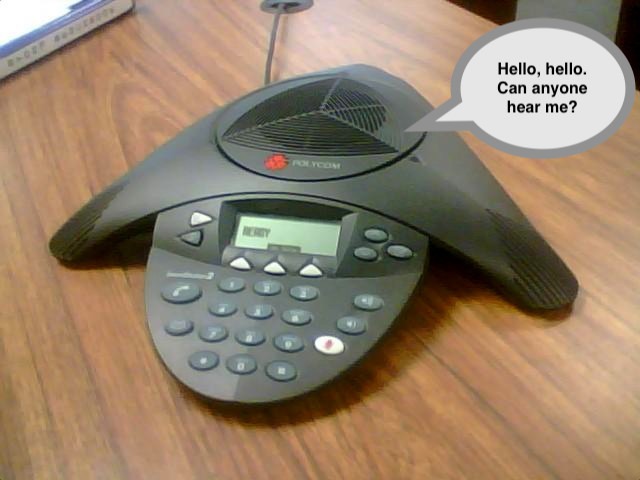Have you ever heard the term "equity of presence"? I heard an interior designer talk about it in the past year -- it's the idea that people need to be treated the same whether they are joining a meeting remotely or in person.
This makes total sense in today's world, but 13 years ago when I was working as a remote employee (when hardly anyone was working remotely), I often felt ignored in meetings and struggled to make my voice heard. Back then, video conferencing technology was complicated and expensive, so many times I participated in meetings by phone.
That meant I was just a voice coming out of the star-shaped Polycom in the middle of the conference table. I could hear what was going on, but I couldn't see it.
My colleagues did their best to include me, but I was often frustrated. I now know what I was experiencing was a lack of equity of presence.
A Conscious Decision
Today, as those of you in the healthcare design and construction industry are returning to the workplace and using hybrid models of working, creating and ensuring equity of presence is more important than ever. Those who run meetings have to be conscious of it -- as well as those who are participating in meetings.
The first rule of equity of presence is to turn all notifications off on your phone and computer.
People can't be equitably present if they're not present. And it's very easy to get distracted by email notifications, phone calls, or text messages while on a virtual meeting.
The second rule of equity of presence is to turn your video on.
During the early days of the pandemic, I worked with a client who never turned on her video for Zoom meetings. I assumed it was because she was self-conscious. If others can't see your face, there's no way you can be equitably present.
Workplace Design
The third rule of equity of presence is to design workplaces that support it.
The typical conference room layout with the video monitor at the end of the table may not be so good at enabling equity of presence.
The interior designer I was listening to suggested two monitors on either side of the conference room table -- one for visuals and the other for people. That way, the virtual people are always present in the meeting.
But the idea that groups of people only need to gather in conference rooms to communicate with each other is also changing.
Writing in the Harvard Business Review last year, Anne-Laure Fayard, John Weeks, and Mahesh Khan suggested that traditional office buildings "will become primarily a culture space, providing workers with a social anchor, facilitating connections, enabling learning, and fostering unscripted, innovative collaboration."
In that context, equity of presence is everywhere in the workplace.
Other Articles About Hybrid Workspaces
The Post-Pandemic Office Should be a Clubhouse, Wall St. Journal, January 2022.
How Are Companies and Employees Planning for the Future of the Office? Gensler, January 6, 2022.
The Future of Work and What it Means for Healthcare Office Spaces, a blog post by me, July 16, 2021.
P.S. Please do me a favor -- if you liked this post and like this blog, please share it with others by sending them the link or posting it on your Twitter, LinkedIn, or Facebook. Also, don't forget to subscribe, so you'll get emails when new content is posted. Thanks!








